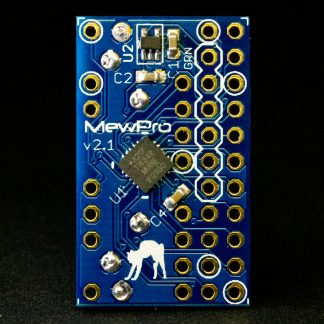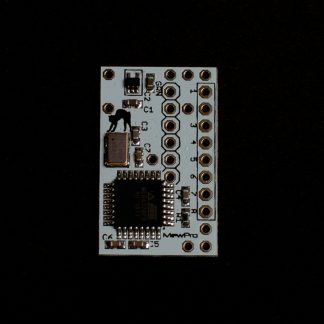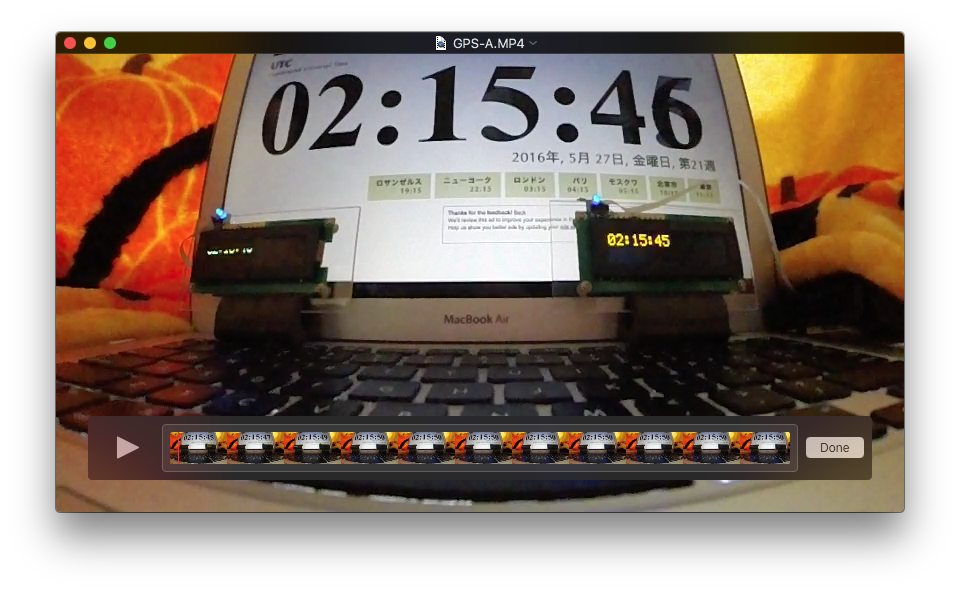
By syncing GoPros and utilizing GPS it is demonstrated how to accurately measure time of an observed event.
For example, taking astronomical videos or photos it is usually important to record the time when those captures were made. Both professional and amateur astronomers interested in especially eclipses or occultations, such as the Moon passes in front of a star, have ever invented many kind of timekeeping devices for this purpose. Needless to say the more exact, the more preferable.
The post proposes a new convenient method to keep time whose precision is within several milliseconds or the duration of one video frame.
The idea is based on the following facts:
- Any number of GoPro cameras can be genlocked or in sync by every frame and scan line to a timing generator.
- Some GPS receiver can output a pulse-per-second (1PPS) signal that have an accuracy of nanoseconds.
Unfortunately we cannot synchronize these two signals, the ones from the genlocking source and the 1PPS. However, we can easily record both of them together by visualizing the latter using LED and pointing one of all cameras in sync with the former to the LED.
In the rest of the post we will perform an experiment to confirm that the precision is kept within one frame while capturing videos.
Measurement
To assure perfectness of the sync we use the following equipments:
- 3 cameras in single dongle configuration
-
- 3 GoPro Hero 3+ Black
- 2 MewPro
- 1 Genlock Dongle
- 2 GPS receivers capable of 1PPS signal output
-
- Akihabara GE-612T (based on u-blox6)
- TAIYO YUDEN GYSFDMAXB (based on MediaTek MT3339)
- Microcontroller boards, OLED (Organic Light-Emitting Diodes) character displays and LEDs
- These are required for displaying GPS time in a form of
hh:mm:ss(hh=hour,mm=minute,ss=second) and every zero second. - MacBook Air
- To show the NTP Internet time for intuitive reference.
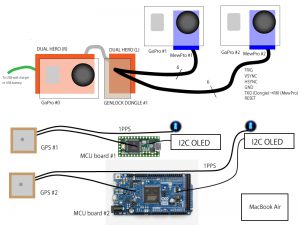
We use three cameras in sync: Two cameras are pointed to LEDs and OLED character displays (another camera is to control the two). Two GPS receivers are of different brands: Each 1PPS signal is aligned to UTC and visualized as hh:mm:ss on the OLED display, and lights the LED when asserted.
Doing this requires some microcontrollers between the GPS receivers and the I2C OLED character displays we use Teensy 3.1 and Arduino Due boards. And in order to make sure that our programs running on these doesn’t have any bugs we also prepare a MacBook Air to show the Internet time that is obtained from an NTP server.
Results and Discussion
The following are clipped from the videos (WVGA, 240fps) shot by the two of genlocked cameras:
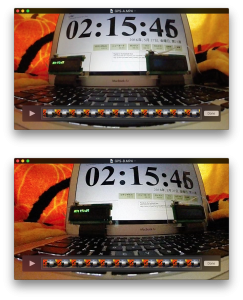
(One frame before 2016-05-27T02:15:46.000Z. Up: View from the right. Bottom: View from the left.)
The blue LEDs haven’t lit yet (cf. the next two images). The MacBook Air behind is slowly changing its time display from 02:15:45 to 02:15:46, however, it turns out to be not so accurate as 1PPS time. The right OLED display shows nothing: This means the OLED, which is always blinking in order to reduce power consumption, is in an off period. At the same time the left is on the way to refresh 02:15:45.
Each of above frames is followed by the next, respectively:
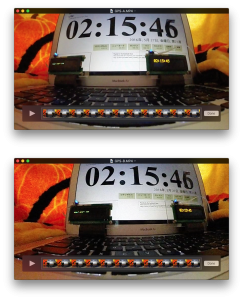
(Exactly it is 2016-05-27T02:15:46.000Z. Up: View from the right. Bottom: View from the left.)
Both of the blue LEDs light. The right OLED display shows the time as 02:15:45. According to GPS’ protocol (aka NMEA) specifications, a rising edge of 1PPS signal occurs on an exact zero second, which is followed by a GPZDA statement aligned to UTC. In the current system the blue LED lights when 1PPS is asserted, and OLED is rewritten when a GPZDA is received by the microcontroller. So it is no wonder that our OLED is not updated yet this time. The left OLED is on its way to erase 02:15:45.
These four images proved the exactness of sync among not only the cameras but also the GPS receivers. And we confirmed the system could be utilized for exact time measurements of events.
Reference
The above stills are extracted from the following unmodified original movies (MP4 files):

